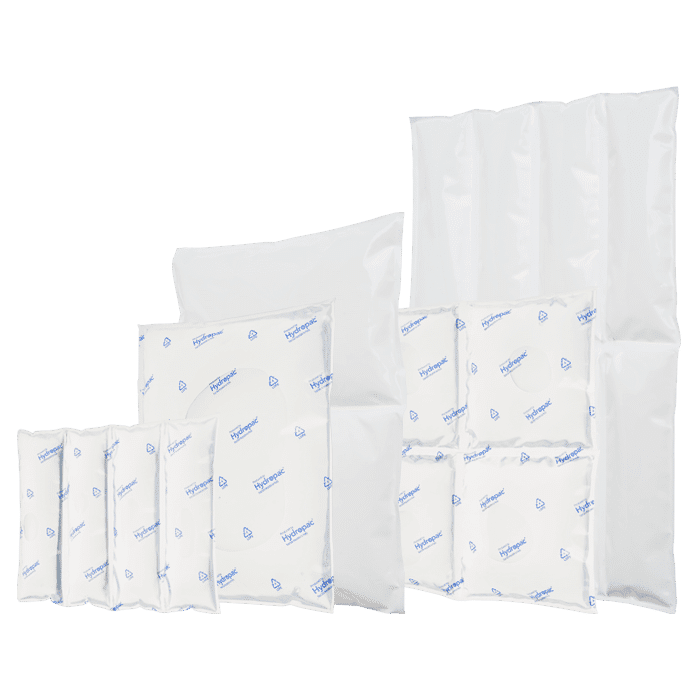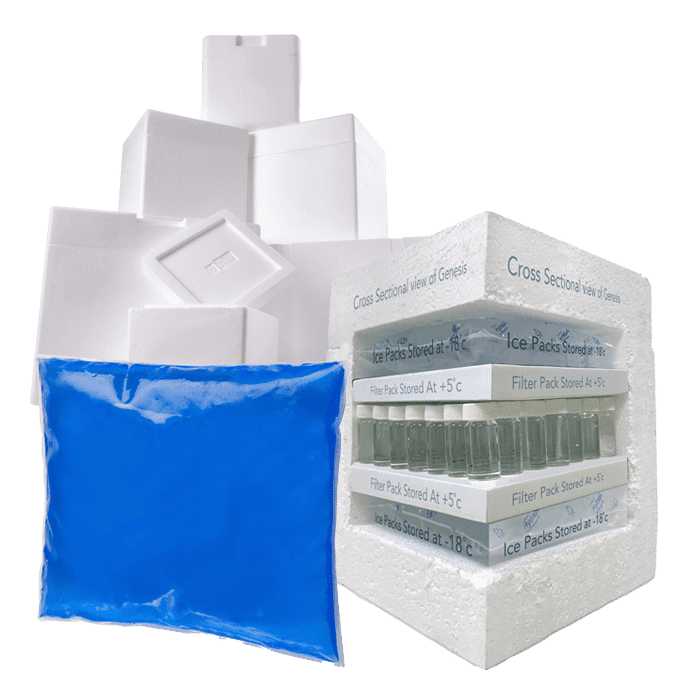Tips for Maximising the Efficiency of Ice Packs in Food Transport
When it comes to transporting temperature-sensitive food products, maintaining freshness and quality is paramount. Ice packs play a crucial role in this process, helping to keep items cool and safe during transit. However, to ensure the efficiency of ice packs in food transport, it’s essential to follow some practical tips and techniques. In this article, we’ll explore the top strategies for getting the most out of your ice packs and ensuring your goods reach their destination in optimal condition.
Custom chilled solutions for you
Hydropac offers every customer a customized solution for chilled and conditioned shipping. For example, we help a customer with limited freezing capacity to deliver gel packs frozen and ready to use, and we can manufacture almost all shapes and sizes of cooling elements. As a customer, you come first: we are here to help you.
Choose the Right Ice Packs
Not all ice packs are created equal, and selecting the right ones for your specific needs is the first step to efficiency. Consider factors like size, type, and duration of cooling required. Gel packs and phase change material (PCM) packs are popular choices. PCMs maintain a specific temperature range for a more extended period, making them ideal for longer journeys.
Pre-Chill Your Ice Packs
To maximize the cooling effect of your ice packs, ensure they are adequately chilled before use. Store them in a freezer at the recommended temperature for at least 24 hours before packing. This pre-chilling ensures the packs start at their coldest and provide consistent cooling throughout the trip.
Properly Insulate Your Products
Efficient insulation is as crucial as the ice packs themselves. Use insulated containers or boxes designed for food transport to prevent external heat from penetrating and internal cold from escaping. These containers help maintain a stable temperature, reducing the workload on the ice packs.
Layering Is Key
Effective temperature control often requires layering. Place a layer of ice packs at the bottom of the container, followed by a layer of food products, and then another layer of ice packs on top. This sandwiching technique ensures that the cold is evenly distributed and surrounds the items, keeping everything consistently cool.
Maintain Proper Packing Density
Don’t overpack your containers. Leave some room for air circulation, which helps in maintaining a uniform temperature. Proper packing density ensures that the cold air from the ice packs can circulate around the food products, preventing hot spots.
Monitor Temperature Throughout the Journey
Invest in temperature monitoring devices, such as data loggers or temperature-sensitive labels, to track the temperature inside your containers during transport. This real-time data allows you to make adjustments if necessary and ensures that your goods stay within the required temperature range.
Minimize Lid Opening
Limit the number of times you open the container during transit. Each time you open it, warm air enters, and cold air escapes, reducing the effectiveness of your ice packs. Organize your items in a way that minimizes the need to access the container until it reaches its destination.
Use Dry Ice for Extended Transport
For exceptionally long journeys, consider using dry ice in addition to regular ice packs. Dry ice maintains extremely low temperatures and can keep products frozen for an extended period. However, it requires special handling due to its low temperature and should be used with caution.
Conclusion
Efficient ice pack usage is essential for the safe and successful transportation of temperature-sensitive food products. By choosing the right ice packs, pre-chilling them, properly insulating your containers, layering products and ice packs, maintaining the right packing density, monitoring temperatures, minimizing lid openings, and considering dry ice for extended journeys, you can maximize the efficiency of your ice packs and ensure your goods arrive fresh and cool at their destination. These tips and techniques will help you maintain the cold chain and deliver quality products to your customers, whether you’re a food retailer, distributor, or simply sending a homemade meal to a loved one.
Sustainability Hydropac and CSR
Sustainability isn’t just a trend for us – it’s a promise. As we innovate, create, and lead, we keep our planet’s well-being at the forefront. With Hydropac, you’re not just preserving the quality of your cargo; you’re contributing to a healthier world.
Experience the power of sustainable temperature assurance with Hydropac – where excellence and environmental responsibility coexist for a brighter future.




